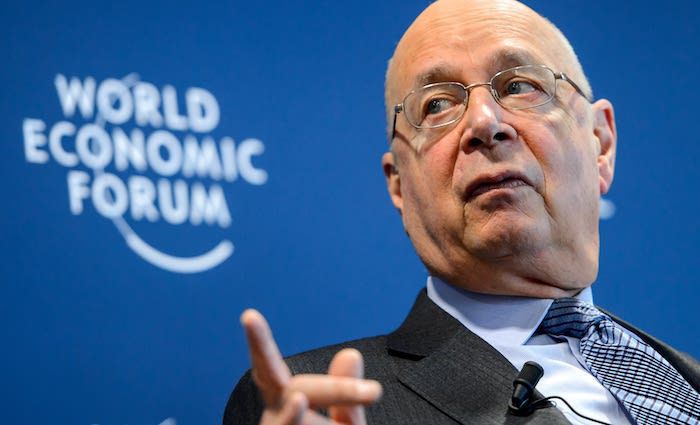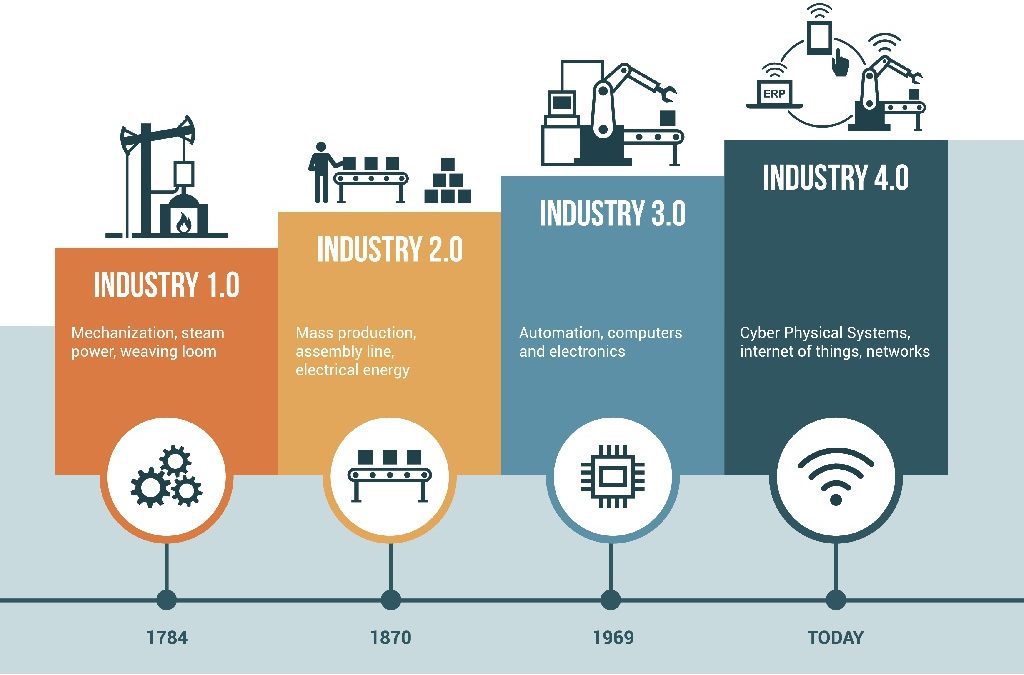
The ideas proposed by the Chairman of the World Economic Forum, Klaus Schwab, in his book The Fourth Industrial Revolution (4IR) have already been criticized quite a lot for a variety of reasons.
Yet for some people who do not identify themselves as supporters of globalization, they seem quite appealing.
After all, Schwab argues that digital innovation will change people’s lives, work, and leisure time for the better. Technologies such as artificial intelligence and robotics, quantum cloud computing and blockchain are already part of everyday life.
We use cell phones and apps, smart technology and the Internet of Things. And compared to previous industrial revolutions, he argues, 4IR is evolving at an exponential rate, reorganizing production, management and governance systems in unprecedented ways.
However, an objective analysis of Klaus Schwab’s reasons shows that he is partly mistaken and that his position is generally driven by the interests of exercising control over society and managing capital which is acquiring new properties.
Critics of the 4IR concept include Nanjala Nyabola, who in her book Digital Democracy, Analogue Politics analyzes the narrative by which Schwab has shaped his ideology.
She argues that 4IR is used by global elites to divert attention away from the drivers of inequality and to facilitate ongoing processes of expropriation, exploitation, and exclusion. Nyabola astutely notes that “the real appeal of this idea is that it is apolitical. We can talk about development and progress without resorting to power struggles”.

The rejoinder from Africa, where Nyabola lives, is not accidental, since this region, together with Asia and Latin America, is seen by globalists as favorable for new interventions under the guise of technological assistance and 4IR.
After all, the evidence suggests that the spread of digital technology has been highly uneven, driven by older technological innovations, and used to reproduce rather than transform social inequalities.
Historian Ian Moll goes further and asks the question whether the current digital technological innovation represents the 4IR as such.
He notes that there is a hegemonic interpretation of 4IR that portrays rapid technological development as a bold new industrial revolution.
However, there is no evidence of any such revolution in the totality of social, political, cultural and economic institutions, both locally and globally; hence attention must be paid to how this ideological structure functions to advance the interests of social and economic elites around the world.
Jan Moll argues that the ‘Fourth Industrial Revolution’ frame bolsters the contingent neoliberalism of the post-Washington consensus period, and therefore serves to obscure the continuing decline of the globalised world order with a ‘brave new world’ narrative.
Schwab has simply made a kind of ideological coup with a set of metaphors narrating an imagined revolution.
Allison Gillwald calls it “one the most successful lobbying and policy influence instruments of our time… Mobilising around the elite annual gathering in Davos, the WEF policy blueprints on the 4IR fill a vacuum for many countries that haven’t publicly invested in what they want their own futures to look like… With visions of global prosperity, packaged with futurist conviction and fantastical economic forecasts of exponential growth and job creation, they appear to provide a ready roadmap in an uncertain future. But caution is required. Even a cursory glance at earlier industrial revolutions will show that they have not been associated with the interests of the working or underclasses. This is despite the broader benefits to society from the introduction of steam, electricity and digitisation. Rather, they are associated with the advancement of capitalism, through the “big” tech of the day”.

Also in this case the new technologies will work for the interests of geek capitalists, not societies.
Moll writes that the 4IR concept seems compelling because it acts as a kind of formula:
1. List 7 to 15 technologies, mostly digital, that seem smart, make us feel obsolete, and inspire awe of the future. Even if they are not twenty-first century innovations, declare them as such.
2. Declare that there is an amazing, unprecedented convergence between these technologies.
3. Assume that they will lead to changes that will disrupt and transform every part of our lives.
4. Appeal to each of the previous industrial revolutions as a model for the present one.
5. Name one or two major technologies or energy sources in previous industrial revolutions. Proven suggestions are the steam engine for 1IR; the internal combustion engine and/or electricity for 2IR; computers and/or nuclear power for 3IR (you would have mentioned the Internet in point I, so avoid it here).
So he unobtrusively instills the correctness of the overall concept. In doing so, “Schwab successfully exploits our internal technological rationality. He proclaims the unprecedented speed, size, and scope of 4IR. The rate of change, he says, is exponential rather than linear; the integration of multiple technologies is broader and deeper than ever before; and the systemic impact is now total, encompassing all of society and the global economy. Thus he argues that “disruption and innovation […] are occurring faster than ever before”.
At the same time, Schwab rejects much of our historical experience on this issue. He writes that he is “well aware that some scholars and professionals view the events I am looking at simply as part of the third industrial revolution”.
But Moll offers to look at some of the expert knowledge he ignores. Here are two examples.
These are the contributions of the Spanish sociologist Manuel Castells, who pointed out that the critical role of networked information and communication technologies is a “double-edged sword”: some countries are accelerating economic growth by adopting digital economic systems, but those that fail are becoming increasingly marginalized; “their lag is becoming cumulative”.
Castells writes extensively about what he calls “the other side of the information age: inequality, poverty, poverty, and social exclusion”, all of which are now the growing legacies of the globalized information economy.
Unlike Schwab, Castells did not attempt to ideologize or politicize sociological data. And his empirical research does not suggest a fundamental digital transformation of society in the modern era.
Another expert Schwab ignores is Jeremy Rifkin. By 2016, when Schwab proposed his 4IR concept, Rifkin was already researching workplaces where robotics had taken over strategic and managerial roles in economic production.
There is a noticeable divide between the authors. Rifkin does not believe that the dramatic changes associated with ICTs constitute a 4IR.
In 2016, Rifkin argued that the WEF “misfired” with its intervention under the guise of 4IR. He challenged Schwab’s claim that the fusion of physical systems, biological processes, and digital technologies is a qualitatively new phenomenon:

The very nature of digitalization […] lies in its ability to reduce communications, visual, auditory, physical, and biological systems, to pure information, which can then be reorganized into vast interactive networks that operate in many ways like complex ecosystems.
In other words, it is the interconnected nature of digitalization technologies that allows us to transcend boundaries and “blur the lines between the physical, digital and biological realms”.
The operating principle of digitalization is “interconnectedness and networking”. This is what digitalization has been doing with increasing sophistication for several decades. It is what defines the very architecture of the Third Industrial Revolution.
A study of the “technologies” often heralded as key convergent innovations of the 4IR – artificial intelligence, machine learning, robotics, and the Internet of Things – shows that they do not live up to the claim of a modern technological “revolution”.
Moll concludes that Schwab’s 4IR is nothing more than a myth. The social context of the world is still the same as in 3IR, and little change is expected. There is nothing like another industrial revolution occurring after the third. Schwab’s brave new world simply does not exist.
After all, revolutions are not just characterized by technological change. Rather, they are driven by transformations in the labor process, fundamental changes in workplace attitudes, shifts in social relations, and global socioeconomic restructuring.
Of course, technological innovations can be good for workers and society as a whole. They can reduce the need to do hard work, improve conditions, and free up more time for people to engage in other meaningful activities.
But the problem is that the fruits of technological innovation are monopolized by a globalized capitalist class.
The same digital labor platforms are financed mostly by venture capital funds in the global North, while enterprises are created in the global South, without the funds investing in assets, hiring employees, or paying taxes to the public treasury.
This is just another attempt to capture markets with a new technology, taking advantage of the transparency of borders, to make a profit, and to have no accountability.
So the 4IR narrative is more aspiration than reality. These are the aspirations of a wealthy class that anticipates the crisis of the Western economic system and wants to find a safe harbor in other regions.
This is why, given the historical experience of Western-style capitalism, the rest of the world sees the 4IR as an undesirable anti-utopia.
By Leonid Savin
Published by Oriental Review
Republished by The 21st Century
The views expressed in this article are solely those of the author and do not necessarily reflect the opinions of 21cir.com.
